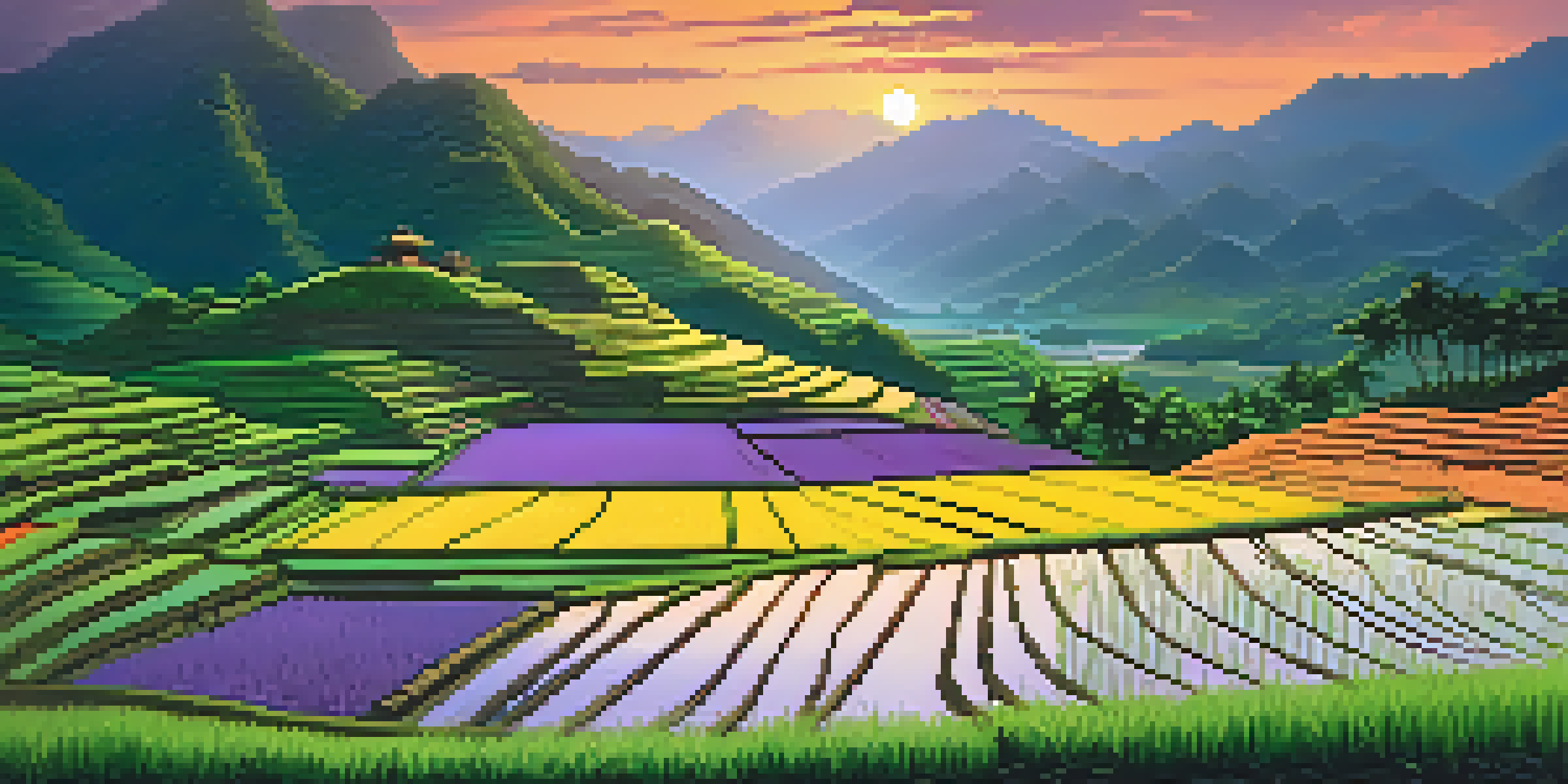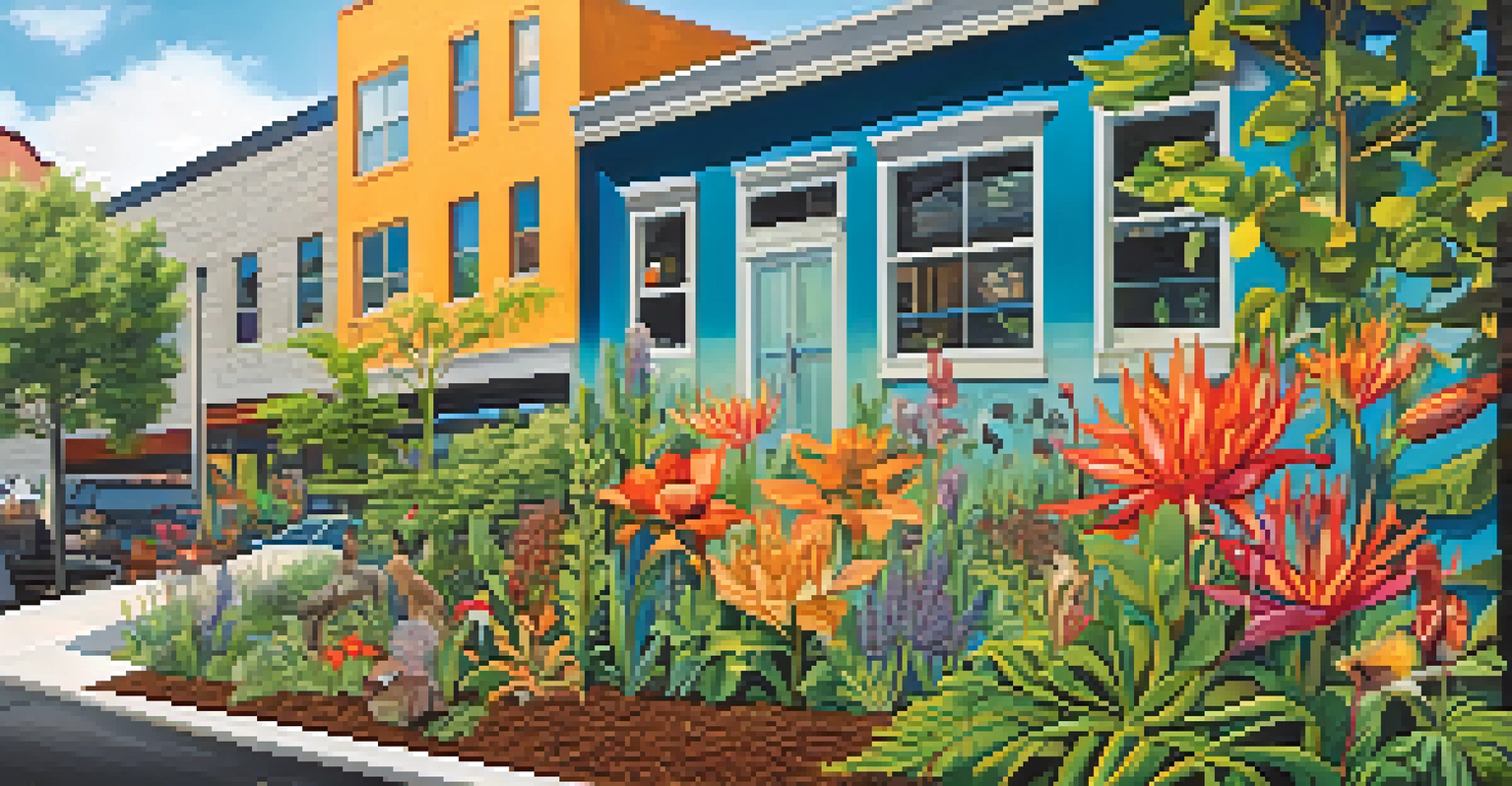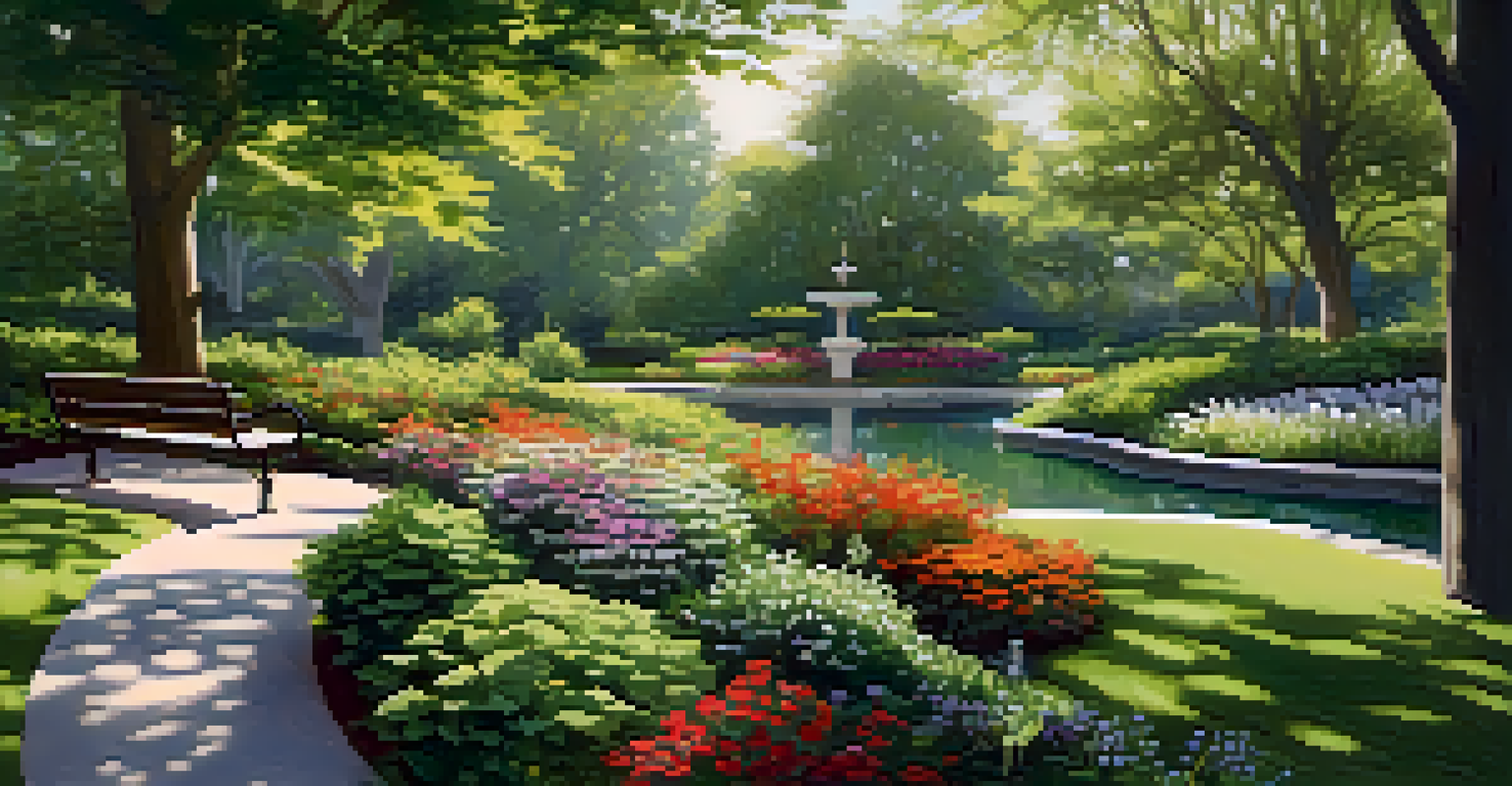Art and Nature: Exploring Cultural Landscapes

Understanding Cultural Landscapes and Their Importance
Cultural landscapes are spaces where human activity and nature intertwine. They reflect the values, beliefs, and traditions of the communities that inhabit them. Think of them as living galleries, showcasing the artistry of both people and the environment.
Art is the most beautiful of all lies; it is a reflection of our reality and a commentary on our existence.
These landscapes often tell stories of historical significance, demonstrating how cultures have interacted with their surroundings over time. From terraced rice fields in Asia to the intricate designs of European gardens, each location holds its own narrative. This rich tapestry of history enhances our appreciation for both nature and artistic expression.
Preserving these landscapes is vital for maintaining cultural identity and biodiversity. As urbanization continues to expand, the challenge lies in balancing development with the conservation of these unique environments, ensuring they remain a source of inspiration for future generations.
Nature as an Artistic Muse Through History
Throughout history, artists have drawn inspiration from the natural world. From the serene landscapes of Claude Monet to the bold colors of Vincent van Gogh’s sunflowers, nature has provided a rich palette for creativity. Each brushstroke reflects not just the physical beauty of a scene, but also the emotions and philosophies of the artist.

Consider the way the Impressionists captured fleeting moments of light and color in their outdoor paintings. Their work reminds us that nature is ever-changing, inviting artists to respond in real-time to its beauty. This dynamic relationship continues today, with artists using various mediums to express their connection to the environment.
Cultural Landscapes Reflect Identity
Cultural landscapes embody the values and traditions of communities, showcasing the intricate relationship between human activity and nature.
Nature's influence extends beyond painting; it permeates literature, music, and sculpture as well. Writers like Henry David Thoreau and poets such as William Wordsworth have celebrated the beauty of landscapes in their works, illustrating how nature inspires creativity across genres.
Modern Art and the Reflection of Natural Elements
In contemporary art, nature remains a pivotal theme. Artists often explore environmental issues, using their work as a platform for advocacy. For instance, installations made from recycled materials highlight the importance of sustainability and our responsibility to the planet.
Nature does not hurry, yet everything is accomplished.
Moreover, modern technology has opened new avenues for artistic expression, allowing artists to incorporate elements of nature in innovative ways. Digital art, for example, can blend real-life landscapes with imaginative visuals, creating immersive experiences that challenge our perception of reality.
This blend of traditional and modern techniques emphasizes the ongoing dialogue between art and nature, showcasing how they can coalesce to address pressing global issues. As we navigate an increasingly digital world, this connection becomes even more significant.
Exploring Cultural Landscapes Through Local Art
Local art plays a crucial role in reflecting and preserving the cultural landscapes of a region. Artists often use their surroundings as a source of inspiration, creating works that resonate with their community's identity. This connection fosters a sense of belonging and pride among residents.
Murals, sculptures, and installations can transform public spaces, inviting everyone to engage with art in their daily lives. For instance, a mural depicting local flora and fauna can not only beautify a neighborhood but also educate residents about their natural environment.
Nature Inspires Diverse Art Forms
Artists across various mediums draw inspiration from nature, reflecting its beauty and the complexities of human emotion.
By showcasing local talent and themes, communities strengthen their cultural narratives and promote tourism. Art festivals and exhibitions centered around cultural landscapes encourage collaboration and highlight the unique stories that each location has to tell.
The Role of Nature in Landscape Architecture
Landscape architecture merges the artistry of design with the functionality of nature. This field focuses on creating outdoor spaces that harmonize with their environment, enhancing both aesthetic appeal and ecological health. Parks, gardens, and urban spaces serve as examples of how design can elevate natural beauty.
Consider Central Park in New York City, designed by Frederick Law Olmsted and Calvert Vaux. It is a prime example of how thoughtfully designed landscapes can provide a sanctuary within a bustling urban environment, allowing people to reconnect with nature.
As cities continue to grow, the role of landscape architects becomes increasingly vital. They work to integrate green spaces into urban life, promoting biodiversity and improving the quality of life for residents, all while celebrating the beauty of the natural world.
Environmental Art as a Form of Activism
Environmental art is a powerful movement that seeks to raise awareness about ecological issues. Artists create works that respond to environmental challenges, often using natural materials or site-specific installations. This form of art not only captivates audiences but also encourages dialogue about pressing global concerns.
Take, for example, the works of artists like Andy Goldsworthy, who creates stunning installations using leaves, stones, and ice. His ephemeral pieces remind us of the beauty of nature and the transient nature of life itself, prompting viewers to reflect on their relationship with the environment.
Art as a Tool for Community Engagement
Participatory art fosters community involvement and connection to local cultural landscapes, making art a medium for social change.
By incorporating environmental themes into their work, artists can inspire action and promote sustainability. This connection between art and activism highlights the importance of protecting our cultural landscapes for future generations.
Participatory Art: Engaging Communities with Nature
Participatory art invites communities to engage with the creative process, often incorporating elements from their natural surroundings. This approach fosters a sense of ownership and connection to the artwork, as participants contribute their voices and experiences. It transforms art from a solitary experience into a collective journey.
For instance, community gardens can serve as living art installations, where residents plant, nurture, and harvest together. Such projects not only beautify neighborhoods but also promote environmental stewardship and social cohesion.

Through participatory art, communities can celebrate their cultural landscapes while addressing local issues. This collaborative spirit enriches the artistic experience and strengthens the bond between people and their environment, making art a catalyst for positive change.